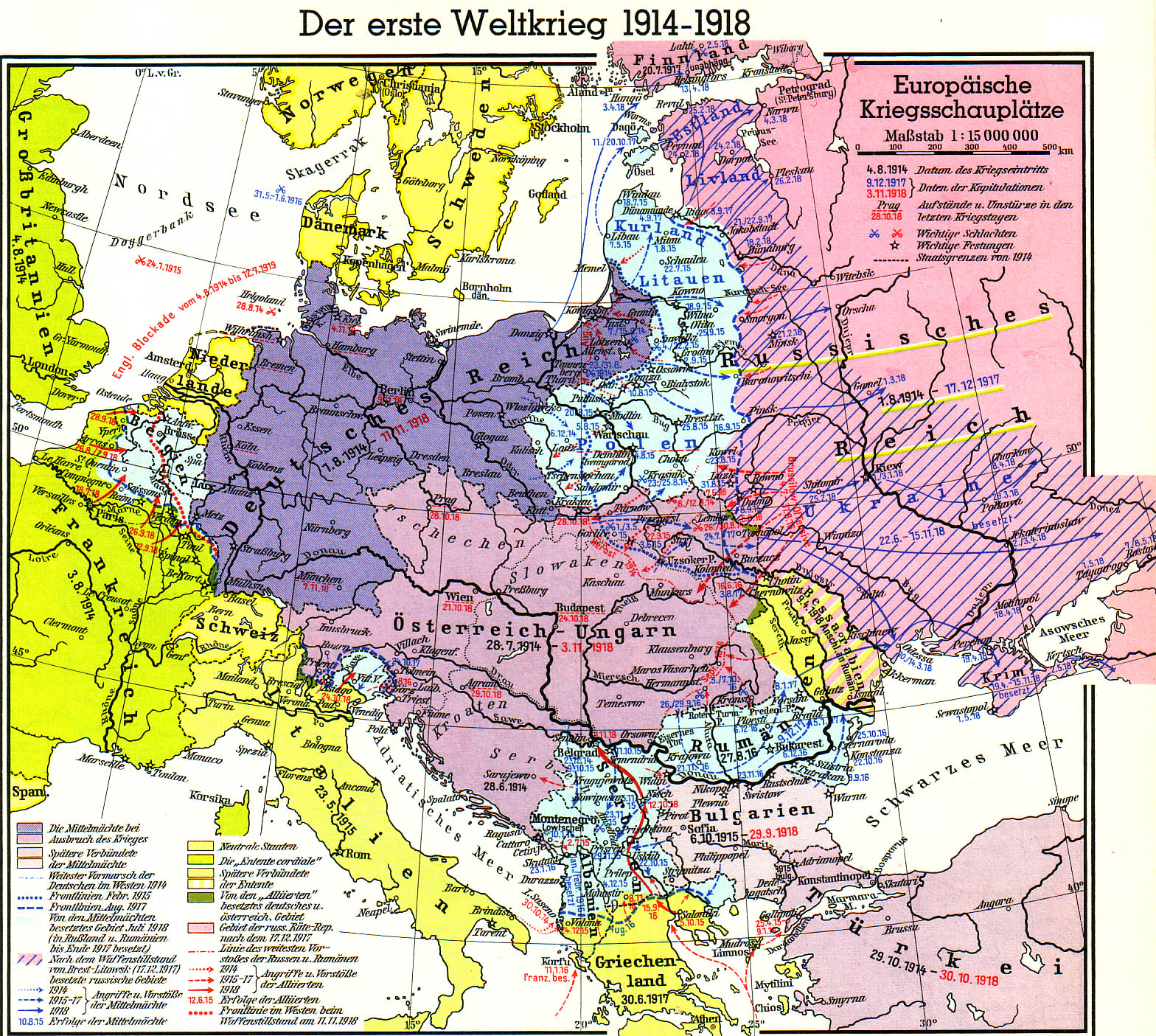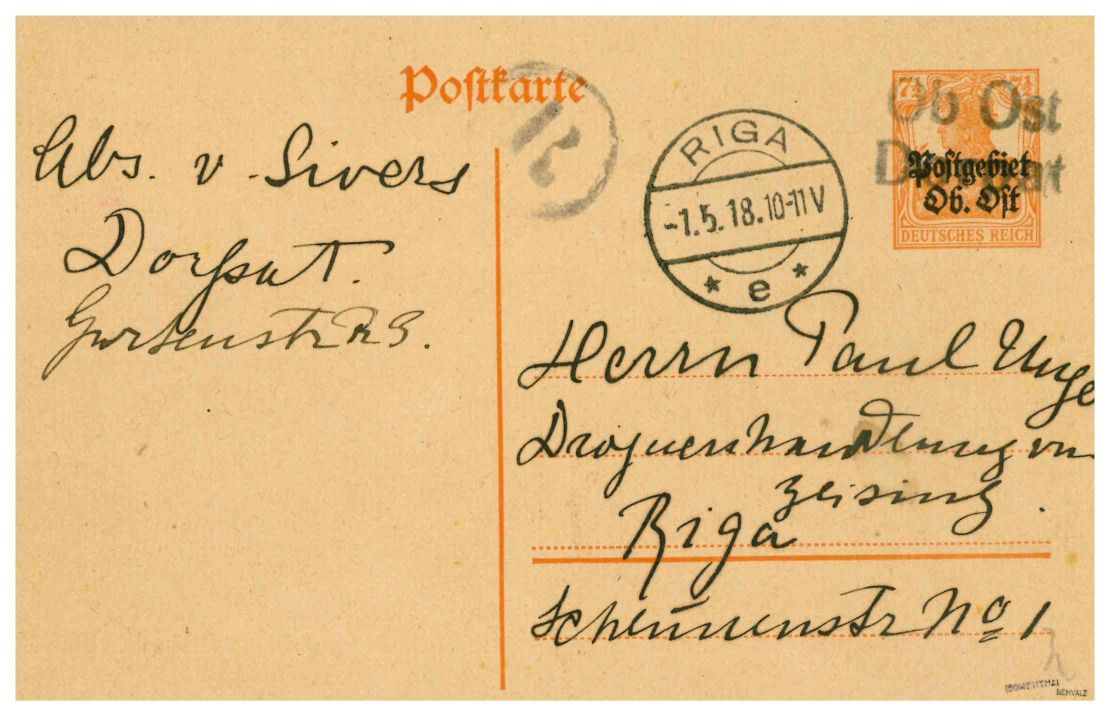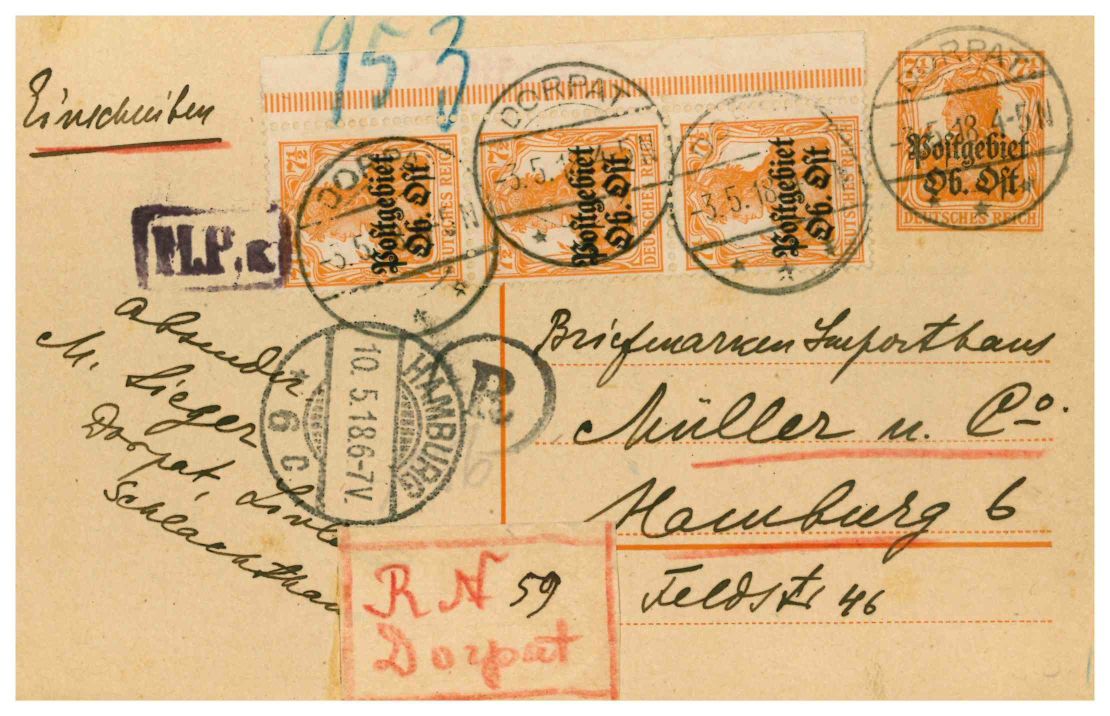Estonia
-
Royal Swedish Post
-
Imperial Russian Post
-
German occupation / Ob. Ost
The "Kaiserlich deutsche Post- und Telegraphenverwaltung im Postgebiet des Oberbefehlshabers Ost" (Imperial German Postal and Telegraph Administration in the Postal Area of the Commander-in-Chief East) was established on January 1, 1916, initially in Kowno (Kaunas / Kauen) and from January 1917 in Bialystok. In contrast to the German field post, it primarily served to process civilian mail from the local population.
In the course of World War I, its area of responsibility expanded with the advance of German troops to the north and east, initially in 1916/17 via Lithuania to the Düna south of Riga, before it encompassed the entire territory of what were to become the republics of Lithuania, Latvia and Estonia from September 1917 with the conquest of Riga, Livonia and the Baltic islands, and in February 1918 the whole of Estonia.

Ober Ost Michel No. 5 cancelled REVAL *** 25.7.18. 9–10 V on picture side on postcard
In July 1918, the Commander-in-Chief East, Field Marshal Prince Leopold of Bavaria, visited the German troops in Reval, here in front of the Baltic railway station. The original photo was taken by the Parikas brothers, who had a well-known photo studio in Reval (Tallinn).
With the withdrawal of Russian troops and the advance of German troops, civilian postal traffic was always stopped first, followed by the establishment of field postal traffic for German troops and then the resumption of civilian postal traffic for the local population.

European theatres of war 1914 – 1918
(Image: Westermanns Atlas zur Weltgeschichte, Berlin, 1953. Source: Andreas Andersen project page)
For Estonia, this meant that by the end of April 1918, the establishment of 13 provincial post offices had progressed so far that they could officially open their counters to the civilian public from May 1:
Arensburg (Kuresaare)
1.5. – 2.12.1918
Baltischport (Paldiski)
1.5. – 15.11.1918
Dorpat (Tartu)
1.5. – 29.11.1918
Fellin (Viljandi)
1.5. – 28.11.1918
Hapsal (Haapsalu)
1.5. – 17.11.1918
Narwa (Narva)
21.5. – 16.11.1918
Pernau (Pärnu)
1.5. – 25.11.1918
Petschur (Petschory/Petseri)
1.6. – 30.11.1918
Pleskau (Pskov/Pihkva)
27.7. – 25.11.1918 (Branch post office of Walk)
Reval (Tallinn)
1.5. – 20.11.1918
Walk (Valga)
1.5. – 19.12.1918
Weissenstein (Paide)
1.5. – 16.11.1918
Werro (Võru)
1.5. – 28.11.1918
Wesenberg (Rakvere)
2.5. – 18.11.1918
Previously, during the ice winter of 1917/18, the German field post had only sporadically accepted and transported civilian mail from the islands to the mainland, and from March 5 –23, 1918, the field post office 219 in Dorpat (Tartu) had accepted and transported mail from civilians with the "Dorpat emergency issue".
Postmarks, stamps, postal stationery
German postal stationery as well as stamps of the Bauten and Germania issues were overprinted with "Postgebiet Ob. Ost".

Postal stationery card "emergency issue Dorpat" , Michel P1, from Dorpat, written on March 6, 1918, via Riga, there franked on March 21 with stamp Ob. Ost stamp . Despite several delivery attempts by the local city post office, the card could not be delivered and was therefore returned to Dorpat, where it returned on 14 April 1918. Numerous censorship notes were affixed in Dorpat, Riga, Bialystok and Warsaw.
From known receipts and documents it can be seen (see EESTI FILATELIST 26/1980, p. 77–78) that even before May 1, 1918, probably from the end of March/beginning of April 1918, there was the occasional possibility of postal traffic for private individuals. For this purpose, the private individual handed over the franked mail item directly to the field post office, which cancelled the franking and transported it to Riga.
For example, before the introduction of a standard postmark, the Fellin (Viljandi) provincial post office used this single-line provisional postmark from the end of April to the beginning of May 1918.

This postal stationery postcard dated (on the reverse) 25 III 1918 at 7 ½ Pf was cancelled with the provisional postmark Fellin and first sent to Riga, where it arrived on 29.3.1918 and was cancelled again. Here it was also censored, which is evident from the postmark "R in circle". The censor also added the following note: "Specify sender, otherwise no carriage in future".
A double-row postmark "Ob Ost / Dorpat" was used in Dorpat at the end of April / beginning of May 1918.

This postal stationery postcard at 7 ½ Pf was cancelled with such a postmark "Ob Ost / Dorpat" and sent to Riga, where it arrived on 1 May 1918 and was censored, as can be seen from the postmark "R in circle".
This is a first day postcard, as the post office in Dorpat was opened on 1.5.1918 – so the card reached Riga the same day.
As early as 3.5.1918, however, the standard circle postmark was (also) used in Dorpat.

Postal stationery postcard at 7 ½ Pf with additional franking (total 30 Pf) for registered mail (note the provisional handwritten R-mark), posted in Dorpat, Livonia, on 3.5.1918, censored and arrived in Hamburg 7 days later.
With the closure of the national post office in Walk (Valga) on 19.12.1918, the activity of the postal administration Ob. Ost on the territory of Estonia ended.
-
Independent Republic of Estonia
-
Soviet occupation
-
German occupation / Ostland
-
Camp Mail / Estonians in Exile
-
Independent Republic of Estonia (restored)
-
Private Mail in Estonia


